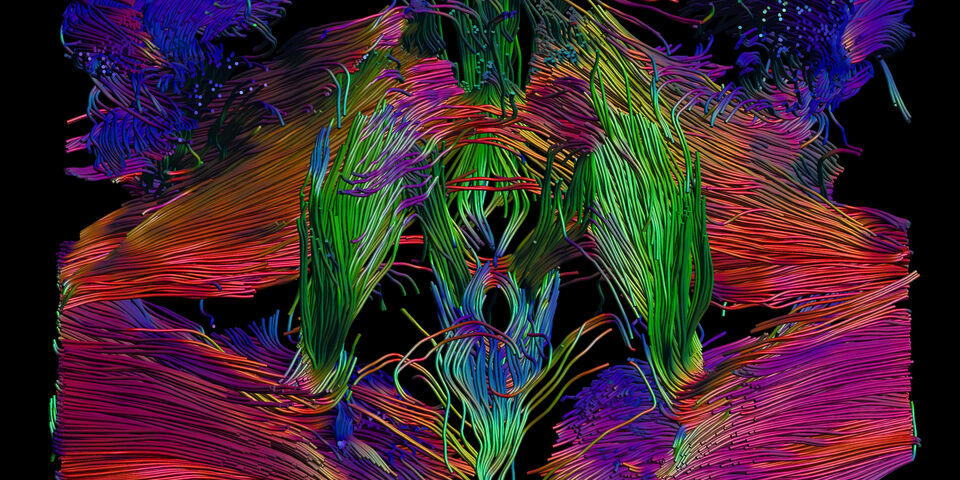Insight in muscle damage
TU/e and the Academic Medical Center in Amsterdam have together developed a technique that allows detailed 3D imaging of complex muscle structures of patients. It also allows muscle damage to be detected very precisely. This new technique opens the way to much better and more patient-friendly diagnosis of muscular diseases. It also allows accurate, non-invasive muscle examinations among top athletes. Martijn Froeling will receive a PhD for this research at TU/e today, Monday 29 October.
Froeling uses diffusion tensor imaging (DTI), an MRI technique that allows the movements of water molecules in living tissue to be viewed. Because muscles are made of fibers, the movements of water molecules in the direction of the fibers are different from those in other directions. This characteristic allows muscles to be imaged with a high level of detail. This was already possible on a small scale with simple muscles, but thanks to Froeling’s work it can now also be done on a larger scale and with complex muscle structures. More importantly, this improved technique also reveals very small muscle damage, because of the different movements of the water molecules in damaged muscle fibers.
To reach these results, Froeling improved the data acquisition process – the way the MRI scanner images the muscle under examination. This has to be performed relatively quickly, because it is uncomfortable for patients to lie in an MRI scanner for a long time, but at the same time it has to provide sufficiently detailed data. He also improved the processing of the acquired data into reliable 3D images. Physicians can now easily view complex muscle structures from all angles on-screen. No new equipment was needed; the researchers used standard widely available clinical systems.
As a practical study, Froeling imaged a range of subjects including the thighs of marathon runners at different times: one week before a marathon, two days after it, and again three weeks after. He was able to visualize the muscle damage following the marathon. This was still visible after three weeks, even though the runners themselves in many cases no longer reported any pain in their muscles. Another study was of the pelvic floor in women; a good example of a highly complex muscle structure. The technique has proved to be capable of imaging this structure with great accuracy, which makes it potentially very valuable for the diagnosis of conditions such as uterine prolapse.
AMC Amsterdam and TU/e now intend to use this technique in studies of post polio syndrome and spinal muscular atrophy. Froeling believes there are numerous potential applications: there are around 600 different types of muscle disease and damage, and the new technique will improve the ability to study these. However further studies will first be needed: although the technique allows muscle disease or injury to be imaged it does not reveal the precise cause, which may be tearing, fat infiltration or other abnormalities. Clarification is also still needed on what are the normal values for healthy men and women of different ages, to provide a reference framework for identifying abnormalities in different groups of patients. Another kind of application is in examinations of top athletes, to allow timely detection of muscle damage or better estimation of the recovery time needed after injuries.





Discussion